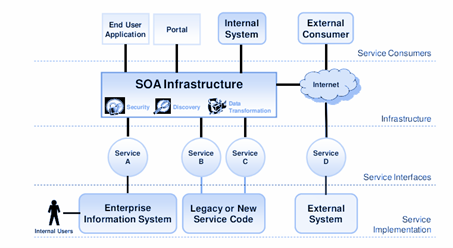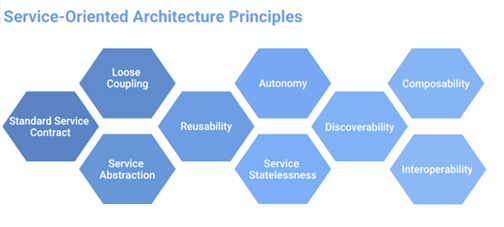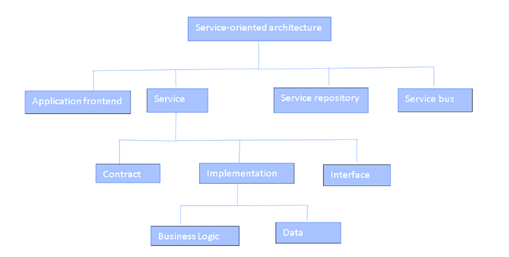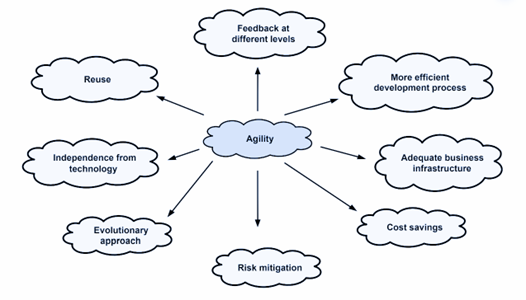Modern-day software development demands for creation of flexible, shared, and adaptable applications for self-contained, reusable functionalities. Service-Oriented Architecture (SOA) is a design pattern and architectural style that focuses on the integration of software components through services. The ever-evolving development domain requires SOA-like architecture aiming at powerful, approaches, concepts, and functionalities to achieve the development goals.
If you are a budding developer seeking more advanced, flexible architectural solutions, this article will go into depth about SOA, its benefits, components, principles, real-world applications and its importance in modern enterprise architecture.
What is Service-Oriented Architecture?
The full form of SOA is simply “Service-Oriented Architecture,” and it is applied in a different field to simplify the integration processes and improve business agility. It is an architectural framework that operates on the principle of service interaction that enables applications to share data between different systems, platforms, and devices using defined services. In SOA a service refers to a self-contained, reusable unit of functionality that can be independently developed, deployed, and managed.

Loose coupling makes it easy for services to interact and blend, therefore, it becomes easier to design distributed systems with SOA, by offering coupling offers flexibility, scalability, and easy maintenance. They are mostly applied in cloud computing environments to enable different applications to communicate seamlessly with one another.
Service-Oriented Architecture (SOA) is a way of designing, developing, deploying, and managing systems … it is neither a system architecture nor a complete system.
- With SOA, users can create applications by combining many features from pre-existing services.
- A collection of design guidelines known as SOA organizes the creation of systems and offers ways to combine different parts into a logical, dispersed whole.
- The capabilities of SOA-based computing are bundled into a collection of interoperable services that may be included in various software programs from various business fields.
SOA infrastructures utilize technologies such as Web Services, message-oriented middleware (MOM), publish/subscribe, or Common Object Request Broker Architecture (CORBA) to connect service consumers to services. They usually host infrastructure services that service providers and service consumers can use to accomplish common tasks or satisfy quality attributes. Security, discovery, and data transformation are typical infrastructure services.

Service-Oriented Terminologies
Hence a comprehended SOA use requires some of the most vital elements that play a very important role in the architecture that binds service consumers to services and makes it an efficient and useful architecture.
1. Services
Reusable components that represent business or operational tasks, such as customer lookup, credit card validation, weather lookup, or line-of-sight calculation. They are well-defined, independent units of functionality that can offer a specific service to other services or systems. Generally, it is platform-independent but accessible over a network using standard protocols like HTTP, SOAP, or REST.

Above is a high-level view of SOA.
2. Service Provider
A service provider is an entity that implements and makes a service available to other consumers. The service is hosted, which can be provided by different applications or components within an enterprise.
3. Service Consumer
A service consumer is any application or system that consumes or utilizes the services a service provider supplies. This could typically be software that interacts with services to deliver some specific goal.
4. Service Locator
A service locator design pattern is used to locate and access services. It offers an abstraction layer so that the consumer can discover and use services without knowing the implementation details.
5. Service Broker
Service brokering is an intermediary between the service provider and the service consumer. It ensures discovery, routes the process, and initiates communication between both parties so that services are provided effectively.
Characteristics and Principles of SOA
Many characteristics and principles define SOA and have made it so beneficial for developing scalable, flexible, and interoperable systems, Successful implementation of SOA depends upon the following guiding principles, such as:
Loose Coupling: Services need to be autonomous and work irrespective of other services. This is the ability of SOA services to operate independently and reduce interdependencies to be maximally flexible.

Interoperability: A service should work and exchange information even if these services are created on different types of technologies.SOA is the ability for applications built on multiple technology and platform bases to communicate. Applications will integrate cross-platform seamlessly.
Discoverability: Services discovery refers to the process of locating web service providers, and retrieving web services descriptions that have been previously published. Hence, services should easily be discovered by consumers.
Standardized Communication: The use of a standardized communication protocol promotes direct communication between services and keeps it standardized, generally using the SOAP, REST, or JSON protocol. Which lets platforms easily transmit data among clients and services regardless of the languages they’re built on.
Reusability: “SOA with non-reusable components is not an SOA.” This is applied within the service-orientation design paradigm, for creating services that can be reused across a business. Also, they can be applied in a lot of applications with a low development cost.
Components of Service-Oriented Architecture
Service-oriented architecture (SOA) refers to a design concept that allows services to communicate and work together to create a unified application or system. There are key components that makeup SOA: These components create a flexible and scalable architecture that enables interoperability and reuse.

Components of the SOA architecture always include the following key elements:
| Service Registry | Central directory of all services listed, which can be discovered by the service consumers. |
| Service Provider | The system or application that provides the service. |
| Service Consumer | The application or client that requests and consumes services. |
| Service Broker | An intermediary that helps in service discovery and communication between service consumers and providers. |
| Enterprise Service Bus (ESB) | A middleware that enables communication and data exchange between different services and systems. |
| Service Contract | It lays down the expectation of input and output along with protocols used in the service; hence, clearly communicating between a service consumer and provider. |
Advantages of SOA
Service-oriented architecture (SOA) is an approach to software design that uses service interfaces to promote the interoperability of software components. It offers several advantages that have made it very popular in modern enterprise systems:
Flexibility
SOA allows organizations to change and modify services independently without affecting the overall system.
Increased Scalability
Since services are independent and may be scaled differently, SOA can support scaling business requirements quickly.

Cost Effectiveness
By reusing available services within applications, the likelihood of redundancy and development costs is reduced.
Agility and Velocity
By creating loosely coupled components, SOA proposes two distinct ideas: First, reuse makes it easy. With loosely coupled services, the introduction of new functionalities or service updates is done faster and more simply.
Better Integration
SOA new or expanded business or opportunities by enabling the integration of various disparate systems and platforms, with minimal friction to the data flow between organizations. Simply, it enables you to do B2B work faster and more efficiently.
Disadvantages of SOA
While SOA has a lot of benefits, it also has some disadvantages:
Complexity
The implementation and management of an SOA are complex due to the number of services and their interactions.
Performance Overhead
Communication between distributed services introduces latency and performance problems, especially in high-traffic systems.
Security Concerns
With multiple services interacting over a network, security becomes a big concern, and robust measures need to be implemented to ensure data integrity and privacy.
More Effort for Maintenance
Because SOA is a composition of so many independent services, the task of maintaining such services and their compatibility with one another can be tough.
Real-world Applications of SOA
SOA is applied to a variety of domains for several purposes, and the best part is these services can be implemented using different technologies and support diverse protocols of communication, data models, etc. Its uses include:
Enterprise Applications
Enterprises apply SOA to integrate numerous legacy systems with modern applications that have enhanced data flow and reduce redundancy.
Cloud Computing
SOA forms the base in cloud environments because services are provisioned, consumed, and scaled dynamically across a distributed network.
E-commerce Platforms
SOA enables seamless communication between various e-commerce modules such as inventory management, payment processing, and customer management.
Healthcare Systems
SOA is used to interconnect heterogeneous health information systems to make patient data instantly available across healthcare institutions.
Defense Mechanism
SOA infrastructure is used by many armies and air forces to deploy situational awareness systems.
To conclude, here are some examples
An example is Service-Oriented Architecture, which has a proven wide architectural approach toward making software systems more interoperable, flexible, and scalable. Applications are divided into reusable services loosely coupled for the smooth performance of organizations through streamlining their operations, decreasing costs, and developing systems with an ability to easily adapt to change
Considering the complexity and performance issues in SOA, it has garnered a firm hold in modern enterprise computing due to the convenience of integration and the agility of a system that SOA provides. SOA has been a critical enabler irrespective of whether applied in an ordinary IT infrastructure or a cloud computing environment and continues to shape its future.



